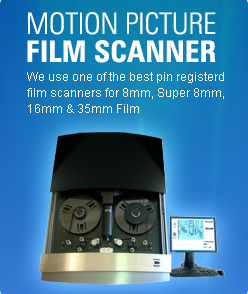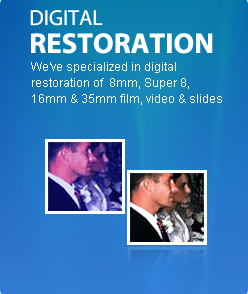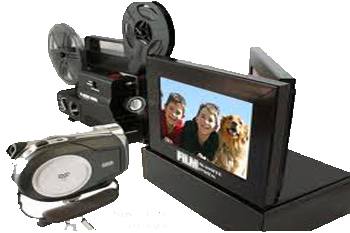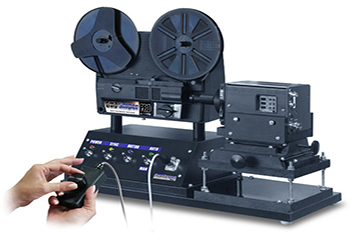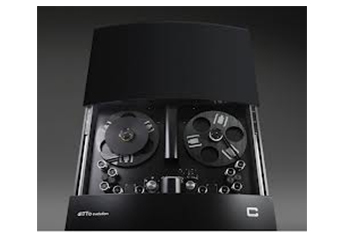
Film Conversion Equipment
Film Scanning and Film Transfer Equipment Types
The type of film scanning machine used for your 8mm, Super 8 or 16mm film conversion will have as much of an impact on the quality you receive as the resolution of the scan itself will. For example, if you wanted to digitize a photograph and tried doing it two different ways. You first put the photograph down on a table and took a picture of it using your smart phone or camera. Then you took the picture and scanned it using a flatbed scanner. If you compare the two side by side on your computer it will become really obvious that the flatbed scanner produced a digital image as good as the photograph. However, the picture you took with your phone or camera does not look close to the quality of the original photograph.
The same goes for scanning your 8mm, Super 8 or 16mm film. The real-time and frame by frame machines below are using a camcorder to take a picture of your film. The motion picture film scanner and Datacine machine are scanning the film. The results will be significantly different.
Film Conversion Equipment |
|
Real Time
|
|
Frame by Frame
|
|
Professional Film Scanners
|
|
Equally important as resolution is the type of film transfer. There are a few basic types of film transfer processes. More than 80% of the companies out there today use a real-time transfer. Any type of real-time film transfer will result in video that is 40-50% worse than the film’s current condition.
So, at this point you’ve learned that film transfers can capture at standard definition (480 lines), high definition (1080 lines) or 2K (1556 lines). You’ve also learned about the 3 different types of film transfers being used today. In order from least to best quality we have:
The film transfer processes above are the basics types and do not include any restoration by themselves. Restoration comes in many different capabilities from color and exposure correction, to grain elimination, to stabilization
Bloomington Fun Facts: In 1950 the city had a population under 10,000 but a decade later it was five times as large. In 1960, the town became a city and further growth would follow. In 1961, Bloomington became home to both baseball's Minnesota Twins (who moved to Minnesota as the former Washington Senators franchise) and football's Minnesota Vikings (an NFL expansion team in 1961), who played at the city's newly-renovated Metropolitan stadium. In 1967, Bloomington gained another team when the expansion Minnesota North Stars of the National Hockey League moved into the city's Metropolitan Sports Center.
Minnesota Fun Facts: (This peculiar protrusion is the result of a boundary agreement with Great Britain before the area had been carefully surveyed.) Minnesota is bounded by the Canadian provinces of Manitoba and Ontario to the north, by Lake Superior and Wisconsin to the east, by Iowa to the south and South Dakota and North Dakota to the west. Minnesota is the home of the Mall of America, which holds more than 400 stores and attracts nearly 40 million people a year. Minnesota became the 32nd state of the union on May 11, 1858. A small extension of the northern boundary makes it the most northerly of the 48 conterminous U.S.
